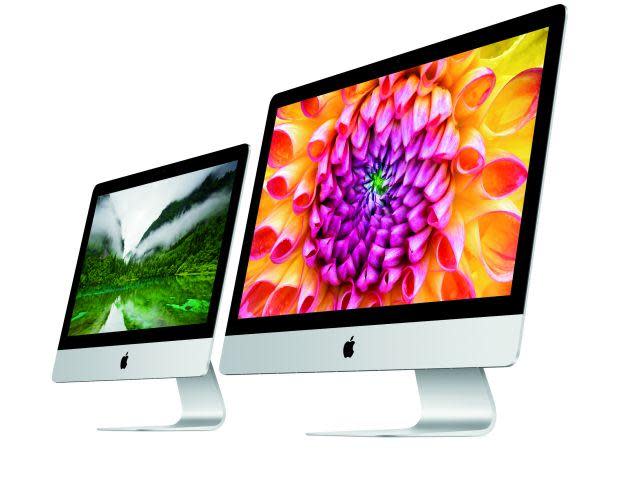Match your Mac system to best fit your needs

imacs-620485.jpg

March Madness brackets, which track the NCAA's popular college basketball tournament, are all the rage. If you're unfamiliar, fans select from among the approximately 70 teams that compete and attempt to predict the winners within each round. Out of millions of brackets attempted each year, perfection is elusive. Fortunately, matching the best Mac to your needs is a much easier proposition. Just be sure to ask the correct questions when preparing a purchase.
Are you a mobile worker?
If you travel frequently for work, and your preference is for a highly portable laptop possessing a minimal footprint but all-day battery, consider the new MacBook line. Apple's MacBook Air and MacBook Pro Retina models are also considerations.
The MacBook Pro works better for users requiring more horsepower, such as performing basic video editing tasks. MacBook Pros can also be configured to store vastly larger amounts of data than MacBooks or MacBook Airs.
MacBook Airs, meanwhile, provide more port options, including two USB 3.0 ports, a Thunderbolt 2 port, a MagSafe 2 power port, and an SDXC slot in 13" models. New MacBooks possess only a single USB-C port, which will prove limiting to some users and require the purchase of additional adapters.
For more guidance selecting between MacBooks, MacBook Airs, and MacBook Pros, check out Jesus Vigo's article, which further examines additional pros and cons for each.
Do you need a desktop computer?
If you frequently work from a desk and require a larger display, and if you prefer a full keyboard (even one possessing a dedicated numeric keypad) and mouse, such as proves necessary for data entry, many financial management tasks, reporting writing, design, and graphics work, consider an iMac. While mating a Thunderbolt display to a Mac laptop meets many users' larger display requirements, iMacs possess considerable power and storage capacity. iMacs can be configured to include quad-core Intel Core i7 CPUs, 3 TB of storage, and even 5K, 27" displays.
If all you need is a basic desktop capable of surfing the internet, sending and receiving email, powering common productivity tools like Pages, Numbers, and Keynote, and accessing web-based applications, and if cost is a significant concern, Apple's Mac mini may fit the bill. At just $499 (USD), you can leverage an existing display, mouse, and keyboard to minimize costs and deploy reliable OS X operation possessing efficient Intel Core i5 or i7 CPUs and up to 2 TB of storage.
Do you perform high-end graphics or scientific tasks?
You know where this question is headed. If you work from a desk and require high-end computing power or the more than two displays, the Mac Pro is the leading candidate. Apple's flagship system boasts stunning design, state-of-the-art performance, and impressive performance capability.
The secret to a winning selection
What if your needs don't fit perfectly into any of the descriptions above? Real world challenges don't always map simply to common scenarios. Here are a few tips gleaned from a few decades in business designed to help your Mac selection perform better than most contestant's March Madness brackets.
If you occasionally perform graphic arts tasks but go on the road often, consider a 15" MacBook Pro. The larger model will prove a little more cumbersome than a smaller model when traveling, but the larger display and MacBook Pro's additional power and storage will prove handy.
If you perform most of your work from a desk, and if you possess an iPad that can fulfill your mobile needs, invest in a larger screen iMac. I've never heard a client or colleague complain that the larger display I recommended they purchase is too big.
If you're working at a desk, require more processing power for intensive tasks, and frequently need more display space in which to track projects, email, images, web-based applications, and other programs, consider investing in the $2,999 entry-level Mac Pro. The newfound (to you) capabilities the system delivers could well pay for itself inside of a few months. Ultimately, only you know how you work and complete projects every day, but if you can calculate basic efficiency improvements and assign fair values to those production efficiencies, you will likely find it requires only a few months to cover the corresponding cost.
Always buy the most storage, processing power, and memory you can justify. There's a reason top seeds win in basketball; they're well prepared and well equipped. Do the same when choosing your business tools. Attempting to future-proof your next computer purchase is futile (systems continue improving and evolving at a sometimes dizzying pace). A few well-placed investments can return handsome dividends, though. Choosing the PPU and RAM upgrades on a 13" MacBook Pro adds 22% ($250) to the purchase price but may well extend the computer's reasonable usefulness for another year compared to a more basic model.
Be honest about what you need
I recently "downgraded" performance from a stout MacBook Pro to a lightweight MacBook Air. I discovered portability is my priority. I don't need to carry 1 TB of data everywhere I go, and I spend less than an hour or two a year actually editing video, so I no longer require a bigger, bulkier laptop. The MacBook Air's lighter weight, fast SSD performance (my previous MacBook Pro leveraged a traditional hard disk), and all-day battery have resulted in my carrying it to more meetings, conference calls, and break out sessions, reducing the amount of time needed to send follow up meetings or messages, transfer hand-written notes, or enter critical information within web-based apps, all of which can be done directly from the meeting location using the MacBook Air. That's my winning combination.
Which Mac works best for your particular business needs? Let us know in the discussion thread below.

